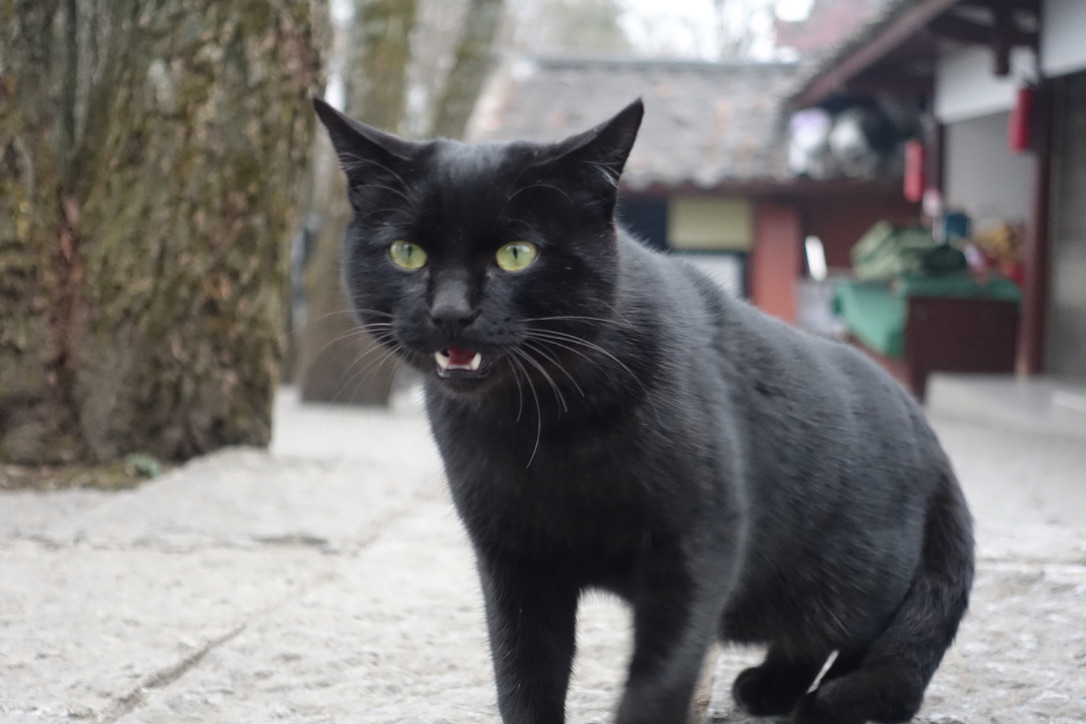Next: Suzhou
Prev: Zhangjiejia
We had 2 full days set aside to explore the Zhangjiejia National Park.
This is the most important and famous natural area in China. It is the first national park, and similar to how Yellowstone is viewed in the U.S.
Word of the day
Hóu 猴 - Monkey
Neither of us were super familiar with the layout of the park, or where exactly to go, or how exactly to get around.
Based on some trail maps, I found a nice hike that went from the bottom of a valley up to the top of a ridge where alot of famous landmarks were.
Luckily the park has frequent buses going everywhere. Unluckily, there are a ton of people in China, so the queues to actually use the buses are super long. It’s best to minimize your use of any public attraction and just go hiking. Otherwise you’ll spend your whole day waiting in lines.
The stairs up were very long and very steep, but at least we found some monkeys on the way.
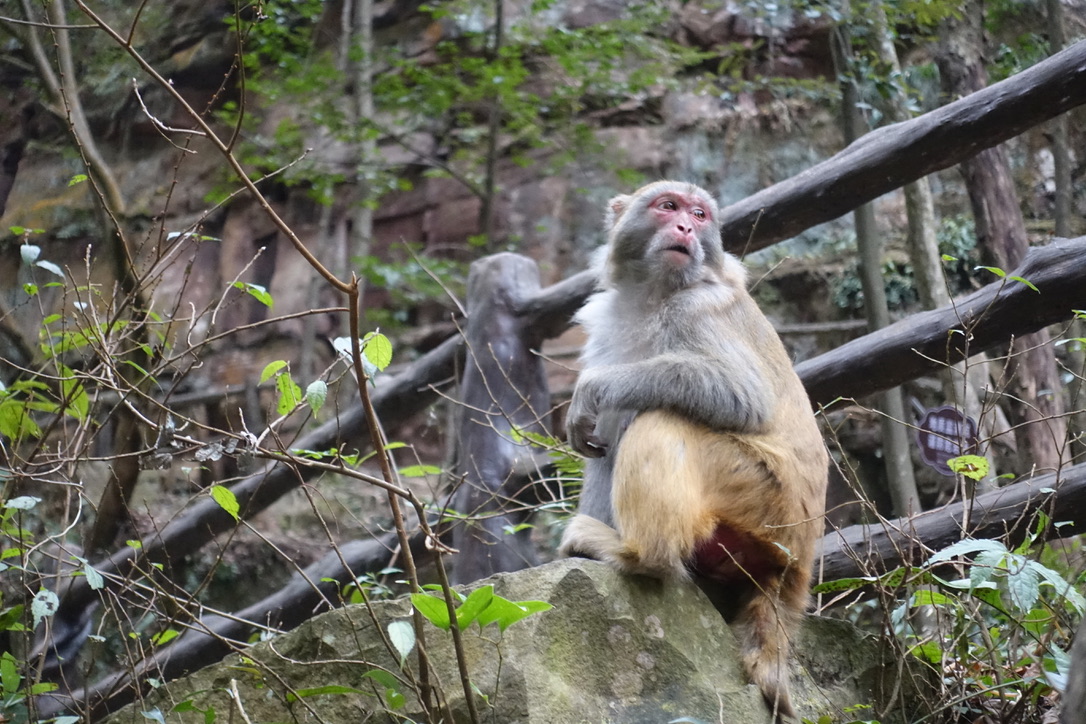
We picked the right hike, because we ended up in the main area of the park where all of the most stunning pillars are.
The park is famous for it’s “floating island” pillars. Alot of people know them from the Avatar movie, with the blue alien fellas.
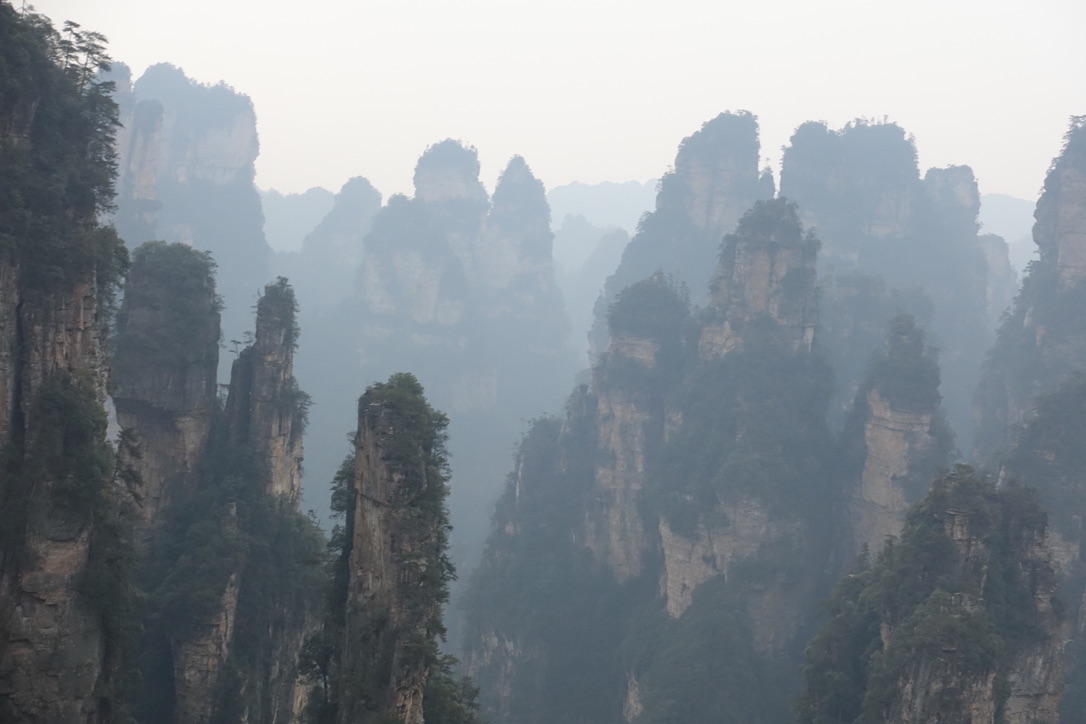 | 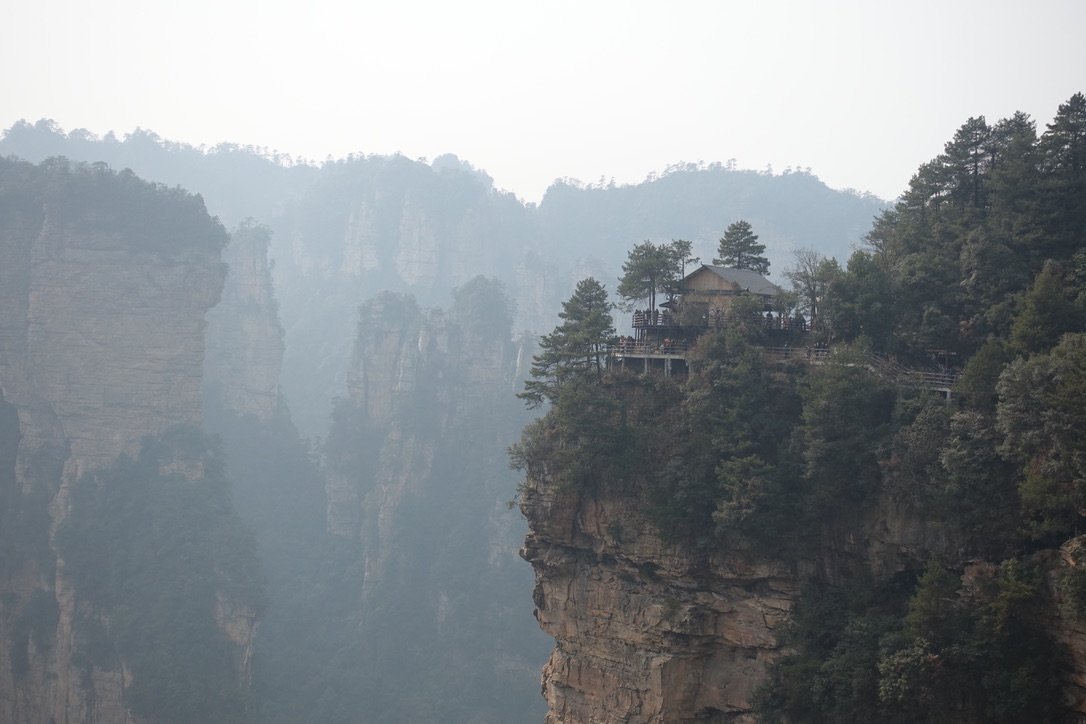 |
|---|
Some of the more stunning ones are:
- the “Avatar Floating Mountain”
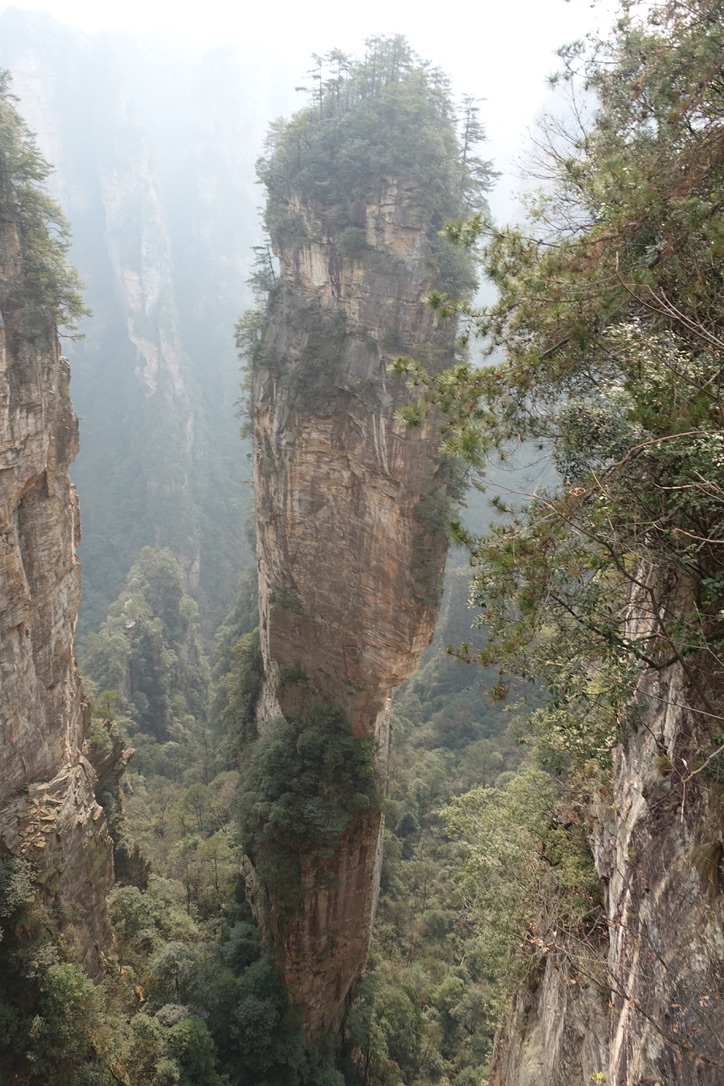
- the “High Arch”, with a prayer ribbon laced path to walk over the arch to the pillar itself.
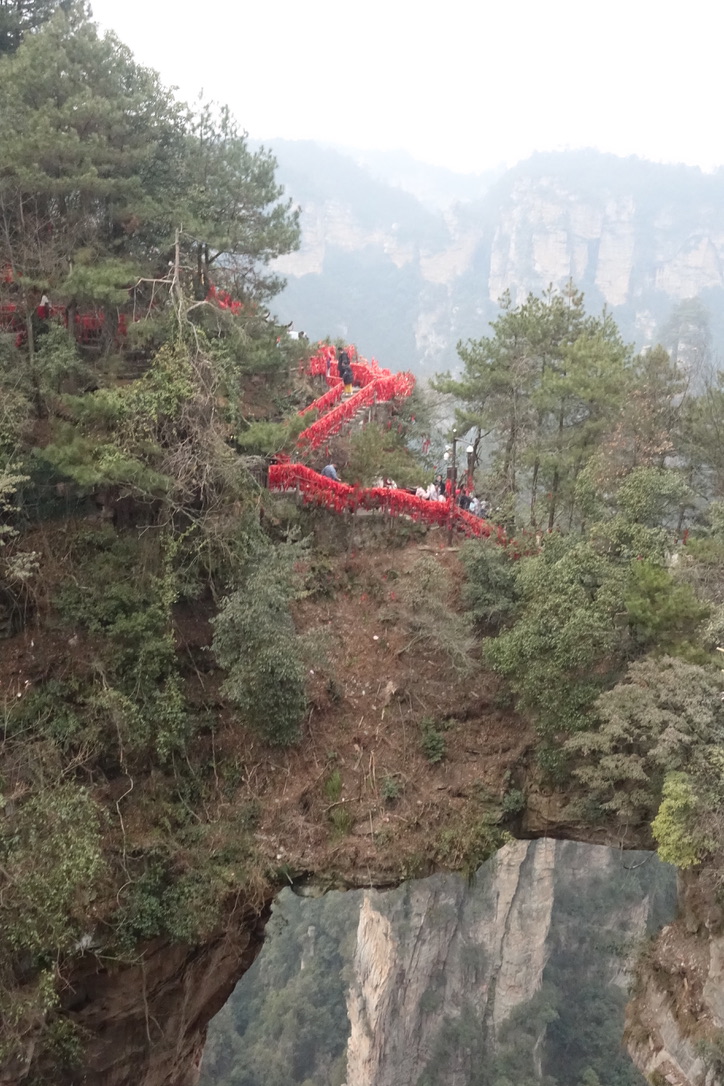
It’s pretty hard to express just how otherworldly these pillars are. They are way too tall and and way too skinny.
We finished the hike by going back down the way we came. By the time we got out of the woods, it was already dark, and we caught the very last bus from that area.
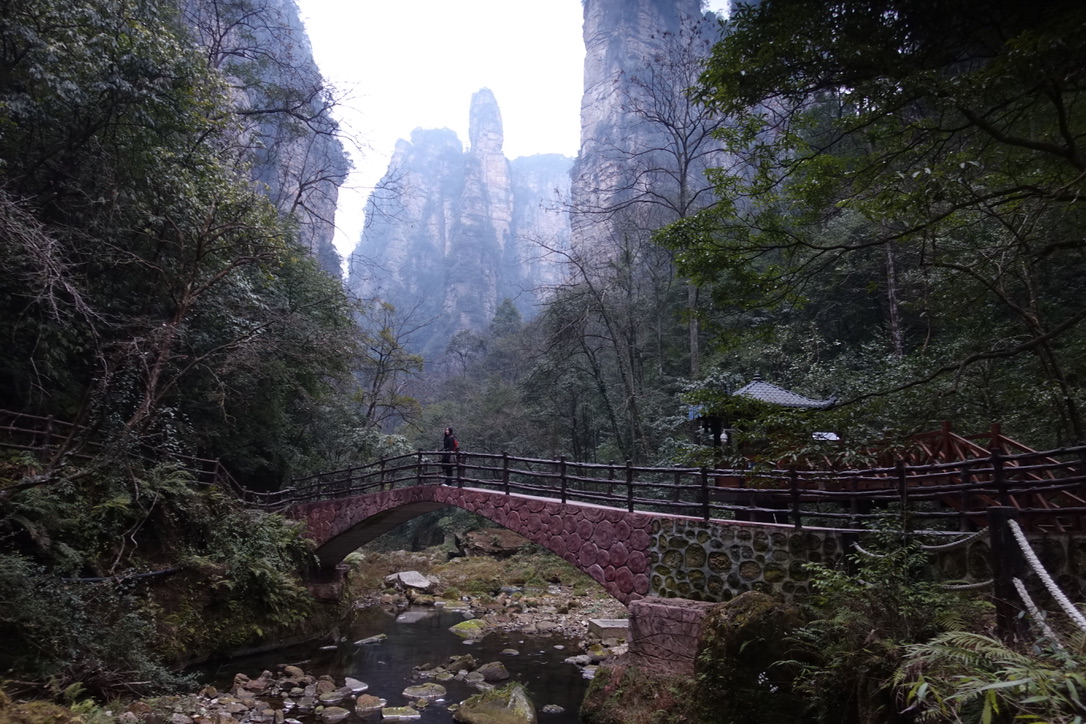
It’s also not really possible to describe the juxtaposition of the park next to the Chinese cities that surround it. China is very liberal with it’s “put colorful lights on everything” policy. Everywhere looks like a crazy casino or something. I wouldn’t exactly call it tasteful. Even the road was lit up like a rainbow.
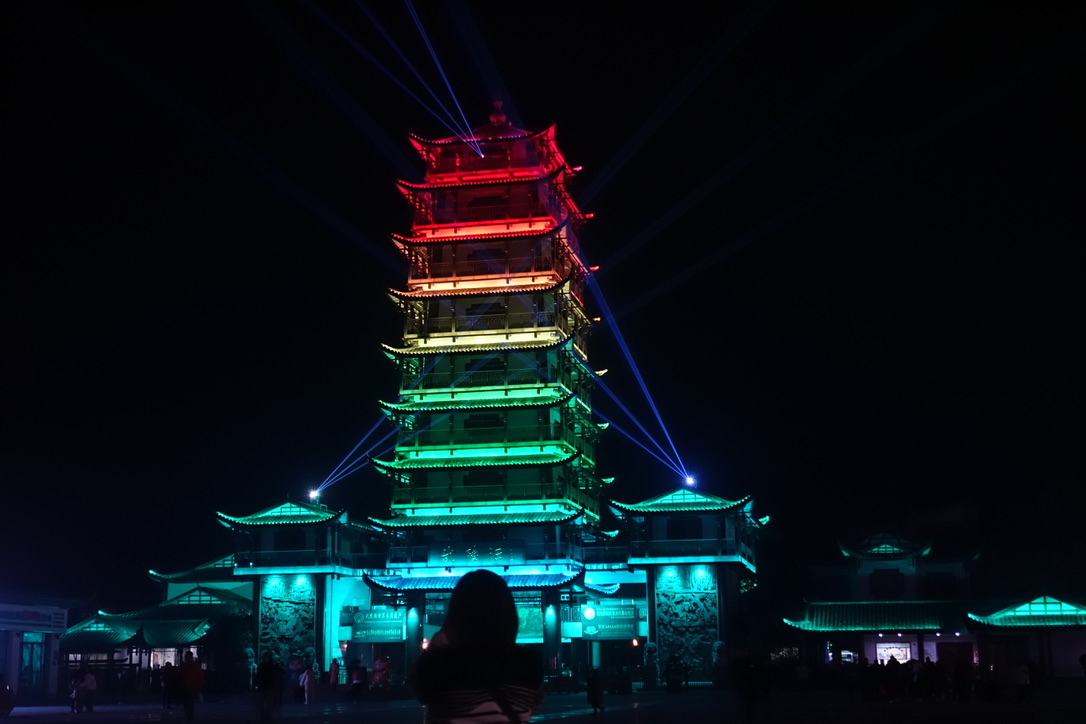 | 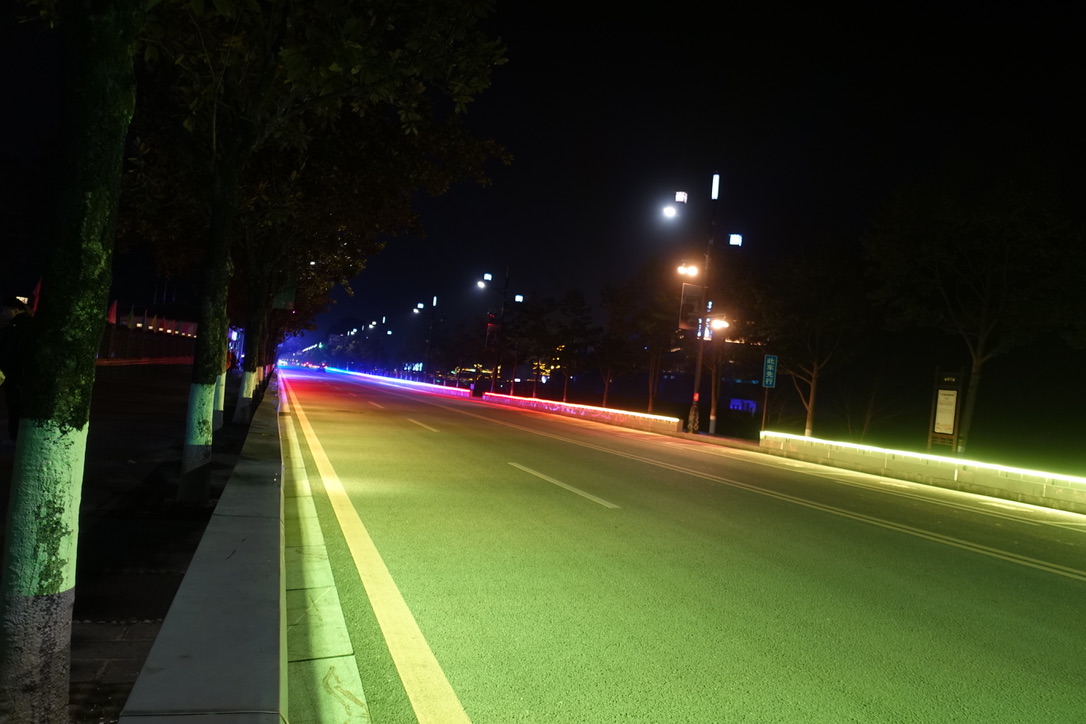 |
|---|---|
| The gate to the park | The road leading to it |
Day 2
The next day was really about one thing: air pollution.
I’ve never really experienced anything like it. It’s hard to describe what air that bad is really like. You can’t escape it, and it messes with how you think.
Nevertheless, we still decided to do a short hike, since we were there and everything. I can say afterwards that It probably wasn’t worth it, for my long term health and all that.
We choose a different mountain peak on the northeast side of the park. We picked this one since it was shorter, and there was a cable car to take down from the top.
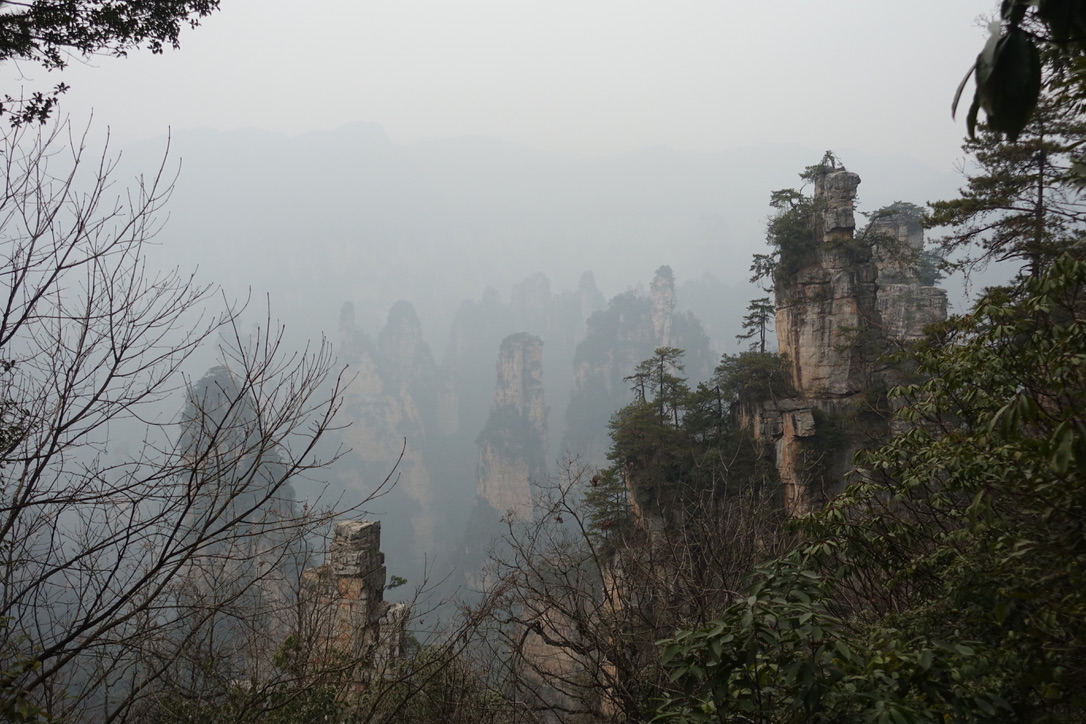
We eventually did make it up, and got a small view. There was also some merchants selling native goods from the inhabitant culture that is from there.
Mountain Cat
The cable car was a huge redemption on the day though, because it was really cool.
It went right down in between the huge pillars.
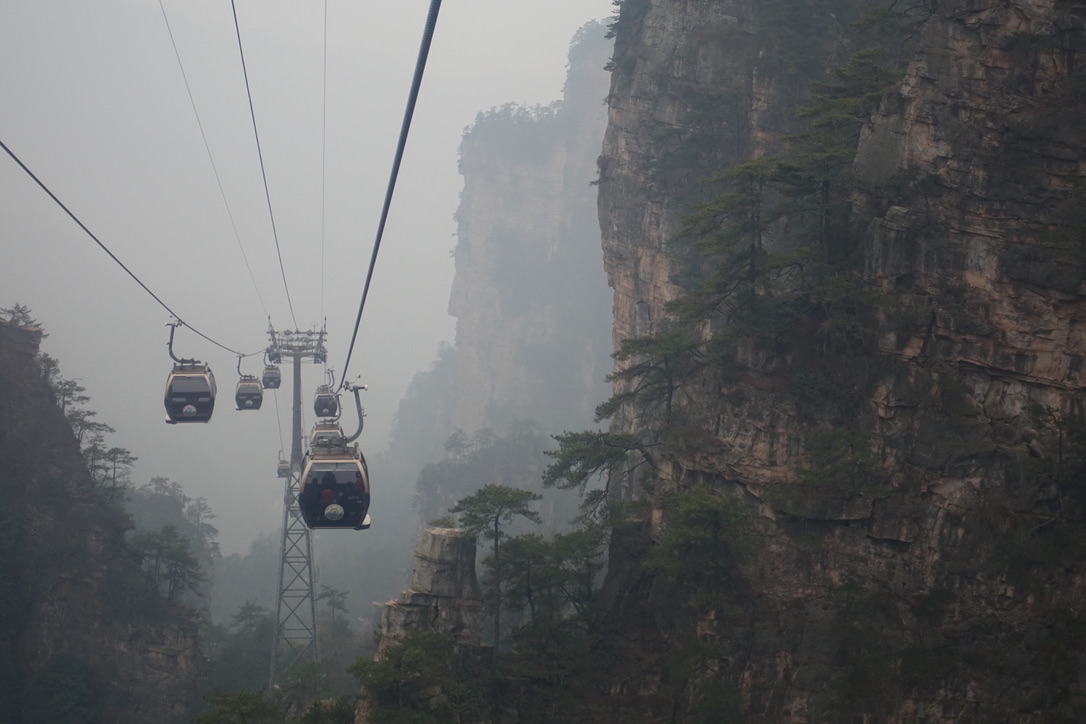
We decided to head back to the hotel early and decide what to do. It wasn’t seeming realistic or very enjoyable to stay somewhere we couldn’t breathe well. It shocked me a bit that the Chinese locals seemed to not notice at all. Me and Kai were the only ones even bothering to wear a mask.
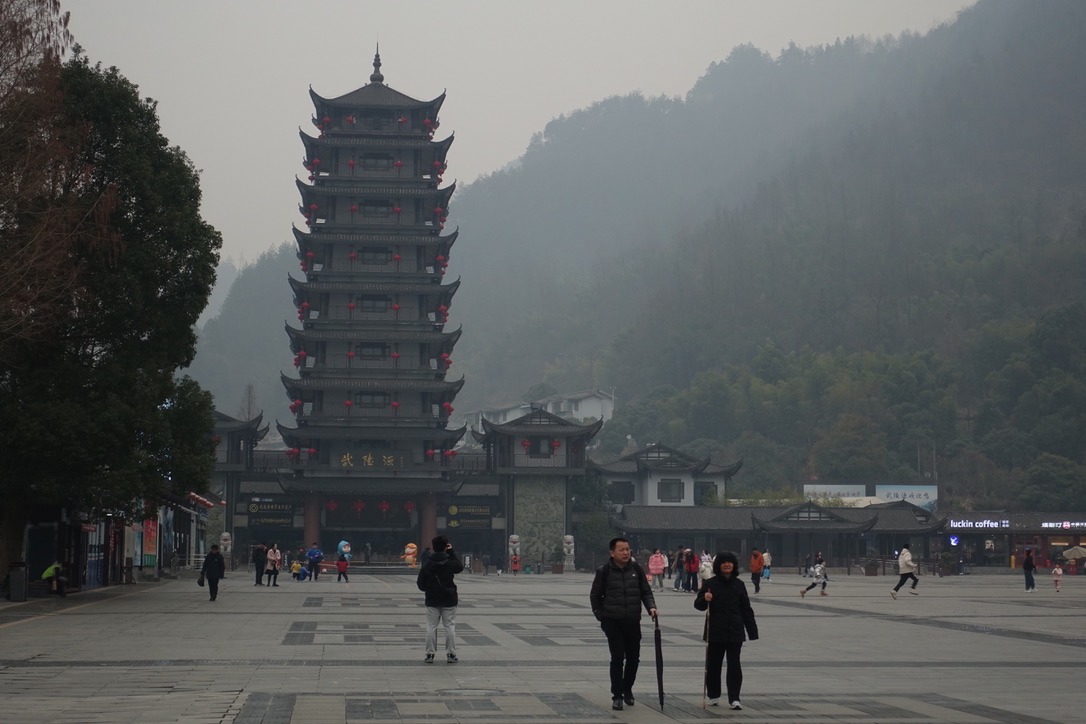
We already had the rest of our trip planned. We were supposed to head to Chongqing in the morning, and Chengdu afterthat.
However after looking at air quality maps, it was even worse there. The only place in all of China that seemed ok was back in Shanghai, where the wind from the ocean was blowing inland.
We returned our train tickets and bought a flight back. I noticed a city right by Shanghai that one of Kai’s friends mention a few days back. It had clear air, so why not head there, to Suzhou?
